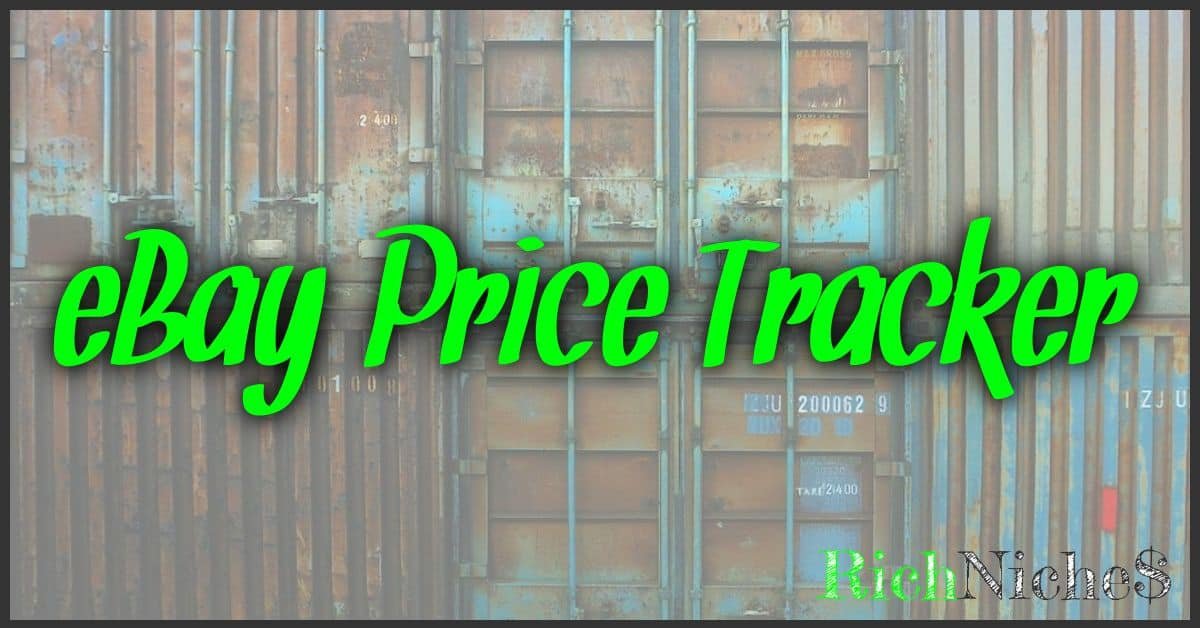Starting a dropshipping business on Amazon is a popular route for entrepreneurs looking to enter the ecommerce space without the need for managing inventory or handling shipment logistics. Dropshipping allows you to sell products directly to customers while the supplier handles fulfillment. Amazon, being one of the largest ecommerce platforms, offers a vast audience and tools which make it an attractive marketplace for dropshipping business models.
To begin, you’ll need to set up an Amazon Seller account, which acts as your portal into the Amazon ecosystem. Identifying your niche is crucial; it defines your target market and product selection to ensure you stand out in a competitive field. Partnering with reliable suppliers is also key, as they will be handling the quality and speed of shipping – both critical to customer satisfaction. Once set up, creating compelling product listings and managing your inventory through the Amazon seller interface are the next steps to getting your online store off the ground.
Key Takeaways
- Dropshipping on Amazon can be a low-entry barrier to starting an online business.
- Setting up a solid foundation involves choosing a niche and reliable suppliers.
- Effective product listings and inventory management on Amazon are critical to success.
Understanding Dropshipping
https://www.youtube.com/watch?v=UZaxRAyV1fI&embed=true

Dropshipping is a streamlined business model that allows you to sell products directly to customers without holding any inventory yourself. Here’s how it essentially works:
- You set up an online store and list products you want to sell.
- A customer places an order on your site.
- You forward the order details to your dropshipping supplier.
- The supplier ships the product directly to your customer.
This model is attractive due to its low upfront costs; you don’t need to invest heavily in stock. Instead, you focus on finding the right products and marketing your store.
Profit Margins: Calculating your potential earnings involves considering the cost price from your supplier and your selling price. The difference is your profit, minus any additional fees, like those from Amazon.
A crucial partner in this model is the third-party supplier. They’re responsible for the fulfillment process, making them a cornerstone of your dropshipping business. When choosing a supplier, ensure they are reliable, offer quality products, and can provide fast shipping.
Table: Key Elements in Dropshipping
| Element | Description |
|---|---|
| Business Model | Low overhead cost, no inventory management. |
| Supplier | Source of your products and fulfillment partner. |
| Inventory | Held by the supplier, not by you. |
| Fulfillment | Process of shipping the product to the customer. |
| Profit Margins | Difference between your selling price and supplier cost. |
Remember, while dropshipping can be less capital-intensive, success hinges on your relationships with suppliers and your ability to mark up products sufficiently to cover costs and make a profit.
Setting Up Your Amazon Seller Account
https://www.youtube.com/watch?v=a5QMTKxYkeY&embed=true
Before diving into the world of Amazon selling, it’s crucial to establish your Amazon seller account correctly. Pay close attention to Amazon’s policies and fees, and choose a selling plan that aligns with your business goals.
Creating Your Account
Step 1: Go to the Amazon Services website and click on the ‘Start Selling’ button. You’ll need to provide your business name, legal name, and contact information.
Step 2: Enter your payment details. Amazon requires a credit card that can be charged internationally and your bank account information for deposits.
Understanding Amazon’s Policies
Key Policy Overview:
- Seller Agreement: Ensure you read and understand the Amazon Services Business Solutions Agreement, which outlines your rights and responsibilities.
- Product Authenticity: You must be the seller of record of your products, and they must be genuine.
Check the Amazon dropshipping policy to ensure compliance. Violations can lead to suspension or termination of your account.
Choosing Your Selling Plan
Selling Plans:
- Individual Plan: Suitable if you plan on selling fewer than 40 items per month. You’ll pay $0.99 per item sold plus additional fees.
- Professional Plan: A monthly fee of $39.99 applies but it’s recommended for higher volume sales. Access to more categories and inventory tools is included.
Consider whether Fulfillment by Amazon (FBA) could be beneficial for handling logistics and providing customer service for your orders.
Finding Your Niche
https://www.youtube.com/watch?v=iccsLJmylJQ&embed=true
Before diving into dropshipping on Amazon, it’s essential to pinpoint a niche that not only sparks your interest but also has the potential to be profitable. In doing so, you’ll cater to specific demands while keeping competition manageable.
Market Research
Conducting thorough market research is crucial in discovering what products are currently trending and understanding the existing demand. Begin by exploring various categories on Amazon to gauge popular items. You can utilize tools like Jungle Scout to identify lucrative niches. List down potential niches and evaluate them against factors such as:
- Seasonal trends vs. year-round stability
- Special interest groups or hobbyist categories
- Emerging products gaining popularity
Analyzing Competition
Once you have a list of potential niches, it’s time to analyze the competition. High competition can make it challenging to establish a foothold, so look for a niche with a healthy balance of demand and competition. Take note of the number of products listed, the quality of current listings, and the presence of established brands. Tools like Helium 10 can aid in assessing competitive metrics. Consider these points:
- Are there dominant sellers, or is there room for new entrants?
- What’s the quality of customer reviews, and can you offer something better?
By meshing comprehensive market research with a sharp analysis of competition, you’ll be better prepared to select a niche that aligns with profitable opportunities and your business goals.
Choosing Your Dropshipping Suppliers
When entering the world of Amazon dropshipping, selecting the right suppliers is crucial. It’s not just about finding a source for products; it’s about establishing a partnership that will uphold your brand’s reputation through quality and reliability.
Supplier Relations
Building a good relationship with your suppliers is essential. Prioritize suppliers who are experienced with Amazon’s dropshipping model, as they’ll be more adept at understanding the e-commerce platform’s requirements and nuances. It’s also beneficial to choose suppliers who can provide flexible and fast shipping options to meet Amazon’s stringent customer service expectations.
- Tip: Communicate regularly and establish clear expectations to maintain a good relationship with your suppliers.
Quality and Reliability
The products you sell are a reflection of your business. Hence, you need to ensure that your suppliers provide high-quality products that meet your customers’ expectations. Conduct due diligence by assessing their historical performance, reviewing customer feedback, and testing product samples before committing to a supplier.
- Keep in Mind: Reliable suppliers should have a proven track record of on-time deliveries and low defect rates.
Supplier Integration
Effective integration with your suppliers can streamline the dropshipping process, making it more efficient and less prone to errors. Look for suppliers that offer direct integration with Amazon to simplify inventory management and order processing.
- Tools: Utilize technology solutions for real-time inventory updates and to prevent overselling.
Remember, the right suppliers are key to a successful dropshipping business on Amazon, so choose wisely to help ensure the longevity and reputation of your online store.
Creating Your Product Listings
When you’re ready to start dropshipping on Amazon, you need to craft compelling product listings that resonate with customers. Your listings should be a blend of informative and persuasive elements to stand out in Amazon’s search results.
Product Titles and Descriptions
Begin with your product titles; make sure they’re clear, concise, and include relevant keywords for which you want your products to rank. Your title should capture the essence of the product within 200 characters while also integrating primary keywords wisely.
Moving onto descriptions, imbue your product’s features and benefits using bullet points for skimmability. Your product description is your opportunity to expand on the product’s features and benefits, explain how it differs from competitors, and answer potential questions. Incorporate keywords judiciously to enhance visibility in search results without compromising readability.
Images and Branding
Your images are the visual front of your Amazon product listing. High-resolution photos that showcase your product from multiple angles are essential. Use a white background for the primary image, as per Amazon’s guidelines, and consider lifestyle images that put your product in context to help the customer visualize ownership.
Branding comes into play in both your images and descriptive content. Remaining consistent with your brand’s voice and style reinforces your brand’s identity. If your brand has a logo, ensure it’s visible in your product images to establish trust and recognition within Amazon’s marketplace.
Managing Your Inventory and Orders
When starting a dropshipping business on Amazon, it is crucial to have streamlined processes for managing your inventory and ensuring efficient order fulfillment. This will help you maintain customer satisfaction and keep your sales on track.
Inventory Management
Your dropshipping inventory is virtual but requires diligent oversight to prevent overselling. It’s essential to keep a real-time check on your supplier’s stock since you list their products on Amazon. When you make a sale, it also counts as a sale for your supplier. To avoid any mishaps, use Amazon’s inventory management tools and establish clear communication with your supplier to update your product inventory frequently.
Order Fulfillment
Order fulfillment is the backbone of your Amazon dropshipping business. After a sale, the order details are relayed to your supplier, who then ships the product directly to your customer. Making this process as seamless as possible is key to success. To do so, select reliable suppliers and understand their shipping terms, as they greatly influence delivery times. Always aim to work with suppliers that can scale with you, ensuring they can handle a rise in sale volume without compromising service quality.
Customer Experience and Service
Creating a positive customer experience is foundational to your success when dropshipping on Amazon. Your ability to provide excellent customer service and handle returns and refunds swiftly contributes significantly to customer satisfaction and retention.
Customer Support
To enhance your customer support, always be accessible and responsive. Make use of Amazon’s tools to communicate with customers, addressing their queries and concerns promptly. Remember, timely and helpful responses can turn even a dissatisfied customer into a repeat buyer.
Utilize FAQs and chatbots to answer common questions, but also make sure you’re available for live support when needed. This level of attention shows your customers they’re valued and appreciated.
Handling Returns and Refunds
When it comes to handling returns and refunds, clarity and simplicity are your allies. Structure your return policy to be straightforward, and align it with Amazon’s guidelines, ensuring a seamless return process for your customers.
Quick steps for an effective returns process:
- Clearly outline the steps for a return on your product page.
- Provide prepaid return labels.
- Process refunds promptly once returned items are received.
Remember, handling returns with care reinforces trust. Customers feel safer purchasing from you, knowing that their satisfaction is guaranteed.
Marketing Your Products
Successfully selling on Amazon hinges on how well you market your products. Your efforts should aim to enhance visibility and entice customers through compelling offers and strategic advertising.
Amazon Marketing Services
Amazon Marketing Services (AMS) offers various tools to promote your products to potential customers. By using Sponsored Product Ads, you place your products in front of shoppers who are actively searching for items like yours. Effective use of AMS can strengthen your brand loyalty as customers begin to recognize your products through repeated exposure.
- Headline Search Ads: Capture attention with ads that appear in search results.
- Product Display Ads: Target customers by interests or products with ads on product detail pages.
External Marketing Strategies
While Amazon provides a powerful platform for promotion, don’t overlook external marketing strategies. Utilize social media platforms to connect with your audience and create compelling content that drives traffic to your Amazon listings.
- Offers & Discounts: Share exclusive deals on your social media to encourage followers to visit your Amazon store.
- Email Campaigns: Build an email list and send out newsletters highlighting new products or special promotions.
Embrace a mix of AMS and external marketing practices to create a robust strategy that enhances your product’s appeal and visibility on and off Amazon.
Financial Aspects of Dropshipping
Before venturing into dropshipping on Amazon, it’s crucial to have a clear understanding of the costs involved and the strategies to maximize your profits. The financial success of your online business hinges on managing fees and commissions effectively and aiming for a healthy profit margin.
Understanding Fees and Commissions
Amazon Fees: When you sell on Amazon, you’ll encounter various fees that can impact your cost structure. Notably, the referral fee is a percentage of each sale that Amazon takes as commission for using their platform. This fee varies by category but is typically between 6% and 45%. Additionally, there’s a variable closing fee on media items.
-
Monthly Subscription: If you choose the Professional selling plan, you’ll pay a monthly subscription fee.
-
Fulfillment Fees: Should you use Amazon’s fulfillment services, expect to be charged for order fulfillment and storage. Otherwise, your chosen third-party logistics provider will have their own cost structure.
Knowing these costs upfront helps you price your products to cover expenses and reach your desired profit margin.
Maximizing Profitability
To boost your profit potential, start with these key steps:
-
Strategic Pricing: Set prices that are competitive yet sufficient to cover all expenses and yield a profit. Use tools like Jungle Scout’s guide to understand pricing strategies specific to Amazon.
-
Cost-Effective Sourcing: Find suppliers that offer quality products at a cost that allows for a healthy markup. Monitor your costs continuously to keep them in check.
-
Monitor Expenses: Regularly review your expenses, particularly Amazon fees, which can change. Minimizing unnecessary costs can directly enhance your profit margin.
Remember, a profitable dropshipping business on Amazon requires ongoing financial management. Keep these financial aspects in check, and you’ll be better positioned for success.
Navigating Legal and Tax Obligations
When you’re starting your Amazon dropshipping business, staying compliant with legal requirements and tax obligations is non-negotiable. You’ll be operating not just as a seller but also as the seller of record, which means you’re responsible for adhering to all regulations and handling taxes appropriately.
Compliance with Regulations
To operate a dropshipping business on Amazon, you must comply with both Amazon’s policies and external legal requirements. As the seller of record, it’s your duty to ensure that:
- Your business follows all federal, state, and local laws related to commerce.
- You respect intellectual property rights and avoid selling counterfeit goods.
- You adhere strictly to Amazon’s dropshipping policies, which specify that you should not fulfill orders with products purchased from another online retailer and that the shipment must be under your name or your company’s name.
Tip: Regularly review Amazon’s dropshipping policy as it can change. Non-compliance could lead to account suspension.
Handling Taxes
Managing taxes for your dropshipping business involves several key steps:
-
Understand your tax obligations: Depending on your location, taxation can vary greatly. Research the tax regulations that pertain to ecommerce in your area.
-
Sales Tax Collection: Register for a sales tax permit in states where you have tax nexus, which generally means a significant presence or volume of sales.
-
Income Reporting: Report your income from Amazon to the IRS and other relevant tax authorities.
-
Tax Payments: Set aside a percentage of your earnings to handle periodic tax payments. You may need to make these payments quarterly or annually, based on your sales volume and local laws.
Note: Dropshipping tax requirements can be complex. It’s wise to consult a tax professional who can provide tailored advice for your business.
By keeping the above in mind and ensuring you stay informed about legal constraints and taxation, you set your dropshipping venture up for a solid, compliant foundation on Amazon.
Leveraging Tools and Technology
To successfully start dropshipping on Amazon, you need to harness a variety of software solutions and automation tools. These will enhance your efficiency, provide valuable insights, and significantly streamline your operations.
Software Solutions
Software solutions are the backbone of a robust dropshipping business on Amazon. For instance, Helium 10 offers a suite of tools designed to help with keyword research, SEO, and product trends, which are critical for making informed decisions about what to sell. Integrating your Amazon storefront with a Shopify store can also be advantageous, providing a centralized hub for managing orders across different platforms.
Automation Tools
Automation tools offer you the flexibility to focus on growth while the technology handles the repetitive tasks. These can range from automatic pricing adjustments to order processing. Effective use of automation can enhance your store’s responsiveness and ensures that your customer service is top-notch round the clock. By automating, you utilize both your time and knowledge more efficiently, which are essential for scaling your business.
Planning for Long-Term Success
When you embark on your Amazon dropshipping journey, it’s crucial to think ahead. A solid foundation and an adaptable approach can set you up for continuous growth and profitability.
Business Planning
To secure long-term success in your ecommerce business, start with a detailed business plan. Outline your objectives, including financial goals, market analysis, and strategies for scaling your operations. Remember to set realistic milestones and budget effectively, considering both your upfront costs and ongoing expenses. Emphasize on cash-flow management; it’s the lifeline of your dropshipping business.
- Define clear short-term and long-term goals
- Craft a financial plan that includes:
- A comprehensive budget
- Forecasted revenue streams
- Contingency funds for unforeseen costs
Adapting to Trends and Changes
Dropshipping on Amazon means operating in a dynamic marketplace where consumer trends and technology evolve rapidly. Stay informed by following ecommerce blogs, attending webinars, and joining forums where other entrepreneurs discuss changes in the market. Quick adaptation to new trends can position your store ahead of competition.
- Regularly evaluate and update your product listings to match consumer demand
- Utilize data from Amazon’s analytics to monitor performance and identify areas for improvement
- Leverage Amazon’s tools and features to maintain a competitive edge
Conclusion
Embarking on your Amazon dropshipping journey, remember to adhere strictly to Amazon’s dropshipping policies for a smooth operation. Focus on creating listings that stand out and provide excellent customer service to build your reputation.
-
Selection of products: Wisely choose products with high demand and low competition to increase your chances of success.
-
Supplier relationships: Forge trusted connections with your suppliers; this is crucial for reliability and quality assurance.
-
Fulfillment: Understand the importance of timely fulfillment of orders to maintain customer satisfaction and adhere to Amazon’s standards.
Dropshipping on Amazon offers a pathway to online retail without the hefty upfront investment in inventory. Your marketing skills will significantly influence your store’s visibility and sales, so invest time into learning about Amazon SEO and advertising.
Stay updated with e-commerce trends and continuously optimize your business approach. You’re creating not just a business, but a brand. Nurture it with attention to detail and a proactive mindset. With persistence and smart strategies, your dropshipping business on Amazon has the potential to grow. Good luck on your entrepreneurial journey!









